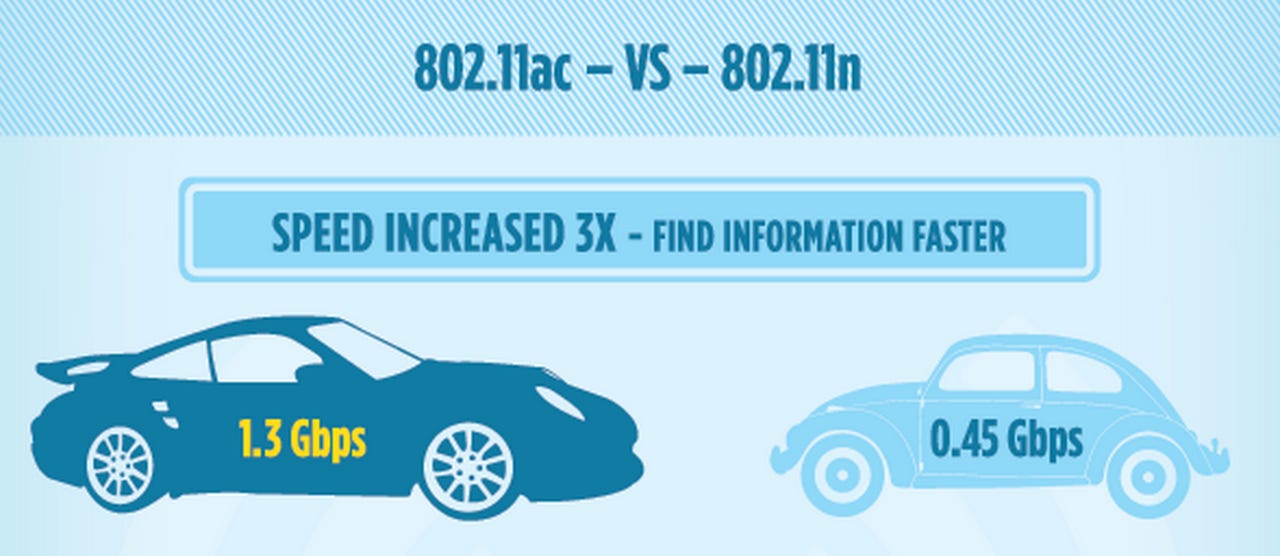802.11ac picks up wi-fi speed in businesses


You may think of 802.11ac as a technology more useful for streaming HDTV than for corporate use, but you'd be mistaken.
According to WildPackets, a network analysis company, "The move to the next generation of Wi-Fi, 802.11ac is picking up steam quickly" in the office. In the last year alone, the company found that 802.11ac adoption rates jumped by 540 percent. Diving deeper into 802.11ac adoption, WildPackets commissioned a survey of its business network customers.
The company found that while 802.11ac is being adopted quickly, it still has a way to go. In particular, WildPackets found:
- Healthcare, high tech and telecommunications account for more than half of all industries that have already deployed 802.11ac.
- 23 percent of respondents have already deployed 802.11ac.
- 29 percent of those surveyed have no plans to deploy 802.11ac.
- 41 percent of respondents said that less than 10 percent of their organization’s current client devices supported 802.11ac. Only 4 percent have already switched over more than half of their clients to the new high-speed standard.
- Finally, 25 percent simply didn't know what their companies' plans were for 802.11ac adoption.
Featured
True, in the real world 802.11ac isn't going to deliver gigabit wi-fi speeds, but the right combination of 802.11a clients and routers can deliver up to 500-Megabits per second (Mbps) speeds. Better still, for a business, they can deliver high-speed data to up to eight devices simultaneously. The net result is that you should see twice to three times the performance of your current 802.11n devices.
Of course, to reap the benefits of 802.11ac your employees must have gigabit wi-fi compatible devices. Fortunately, WildPackets finds, in businesses adopting BYOD policies, employees are often bringing to work their 802.11ac-capable smartphones and laptops such as some late model Apple MacBook Airs, and many HTC One and Samsung Galaxy smartphones.
The companies that are switching to the 802.11ac fast lane are ones that already depend on high-speed networks such as high tech, telecommunications, education, manufacturing, and healthcare. WildPackets expects that businesses are about to start a major switchover to 802.11ac.
802.11ac adoption will be driven by the aging out of 802.11n devices and the broad adoption of the new technology wireless chipsets in all computing devices. Speaking as someone who uses 802.11ac myself in my home office, I think you and your businesses will be delighted by the switch. It's no gigabit per second, but it's much faster — and isn't that what we all want from our wi-fi?
Related Stories: